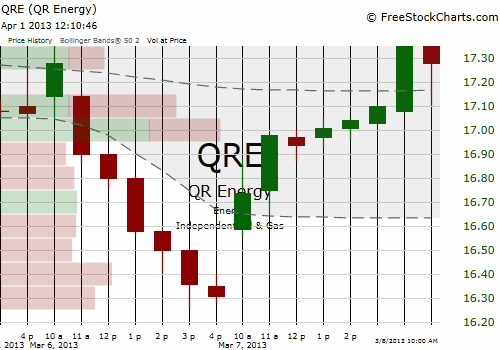 Author: Ben Dickey, BSG&L Financial Services LLC
Author: Ben Dickey, BSG&L Financial Services LLC
Covestor models: Pure Growth and Growth Plus Income
After huge volatility for most of 2011, the S&P 500 index ended the year about where it started. Small and Mid-Cap stocks finished 2011 down around 4% and 2%, respectively. The European Debt Crisis and slowing in China caused emerging markets to have much worse losses. Investors fled the risk trade and bid up bonds. The Vanguard Total Bond Market Index was up over 7% for the year. These factors caused investors to ignore the good fundamentals in the equity markets. Inflation in the emerging markets had accelerated to a point that central banks in the region raised interest rates in order to start slowing their economies. Then to compound matters for both the markets and the economy, Washington could not agree on the budget or deficit ceiling, causing further turmoil. Looking to 2012, some of last years problems are still here, although some have improved. One new factor that may cause volatility in the markets is the upcoming fall elections.
January was a good month with the Dow Jones Industrial Average up over 4%. However, Caterpillar (CAT) was responsible for a large percentage of the gain. The economy should continue to slog ahead in 2012, slow but gaining slightly. Forecasts for the economy range from 2% to 3.5% growth in the first half of the year but slowing to a crawl in the second half. This slowdown is due to rising taxes, increased business regulations and the new health care law that are looming in the near future. Europe is trying to push their problems further down the road, hoping their economies will improve and help their budget and debt problems. The emerging markets did manage to slow down their economies, however they are still growing at a 6% to 8% rate. China’s manufacturing index was positive in January which helped industrial metals and the energy markets to improve. I believe Europe will slip into a mild recession, due in part to their austerity programs and also due to the massive amount of sovereign debt that must be rolled over in the next year or so. I’m afraid the markets and the economy will be bound by volatility, with continuing fits and starts, but overall will grow slightly. I would not recommend using large index funds, like the S&P 500. However, certain sectors should out perform while a few will underperform.
As I previously stated, our economy and markets should move ahead slowly, but in an upward movement. This creates certain market opportunities as well as puts certain sectors under severe strain. European debt problems probably will cause banks and other large financial institutions to lose money and could erode their capital base. We are avoiding this group. However, the emerging markets will continue to need large amounts of commodities, industrial machinery and parts. Many of the large US based companies that operate globally will be able to take advantage of this increased consumption demand and should grow their bottom lines. However, I do not think the economy will improve enough to reduce the large overhang of unemployed and under employed Americans. The U. S. economy will not have a robust recovery until business opportunities improve sufficiently for all companies which should lead to an increase in employment gains. The U.S. economy is too large for manufacturing alone to jump start it.
Major technological advances in the oil & gas industry have caused the United States to have an increase in oil production for the first time in over twenty years. The production of natural gas has increased to the point that prices have collapsed. This is lowering the cost to manufacturing companies. In addition, the increased production of natural gas liquids such as ethane, propane and butane has lowered the input costs for the chemical industry. As a result, chemical companies are moving production back to the US from overseas. This also will reduce the balance of trade deficit and add jobs.
The aforementioned beliefs cause us to stay with an overweighting in our basic portfolio allocations to industrial, energy, and commodity companies. We like Caterpillar (CAT), Deere & Company (DE), Honeywell International (HON), United Technologies (UTX), Emerson Electric (EMR), and Cummins (CMI) in the industrial sector. We also like Helmerich & Payne (HP), Cameron International (CAM), Halliburton (HAL), and Schlumberger (SLB) in the oil field services area. We have just recently added Mitcham Industries (MIND), a seismic rental company to this area.
Our holdings in commodities and energy have changed little. We continue to like Continental Resources (CLR), GeoResources (GEOI), Anadarko (APC) and EOG Resources (EOG) in energy. In industrial commodities we like Peabody Energy (BTU), Freeport-McMoRan Copper & Gold (FCX), Cliffs Natural Resources (CLF), Vale S.A. (VALE),, and Southern Copper (SCCO). To reduce overall portfolio volatility and generate income, we like Kinder Morgan Energy Partners (KMP), Linn Energy (LINE), Energy Transfer Partners (ETP) and SeaDrill Limited (SDRL). These companies have good dividend rates of between 5% and 9.5%.
We are light in the technology sector, but like Amazon.com (AMZN), Apple (AAPL) and International Business Machines (IBM). We also only own one small regional bank, which is our exposure to the financial sector.
As I stated earlier, I believe the European debt problem has us most concerned about this year. I believe the election can also cause some turmoil due to the uncertain tax consequences. Hedging this volatility, in my opinion will be hard. Gold was as volatile as the markets. Several hedge funds lost huge sums of money betting on gold. About the only way to reduce volatility is to add some consumer staples with good dividend streams. However, if you are a long term investor, the aforementioned sectors should allow an investor to outperform the markets with a somewhat reduced amount of volatility for the foreseeable future.




